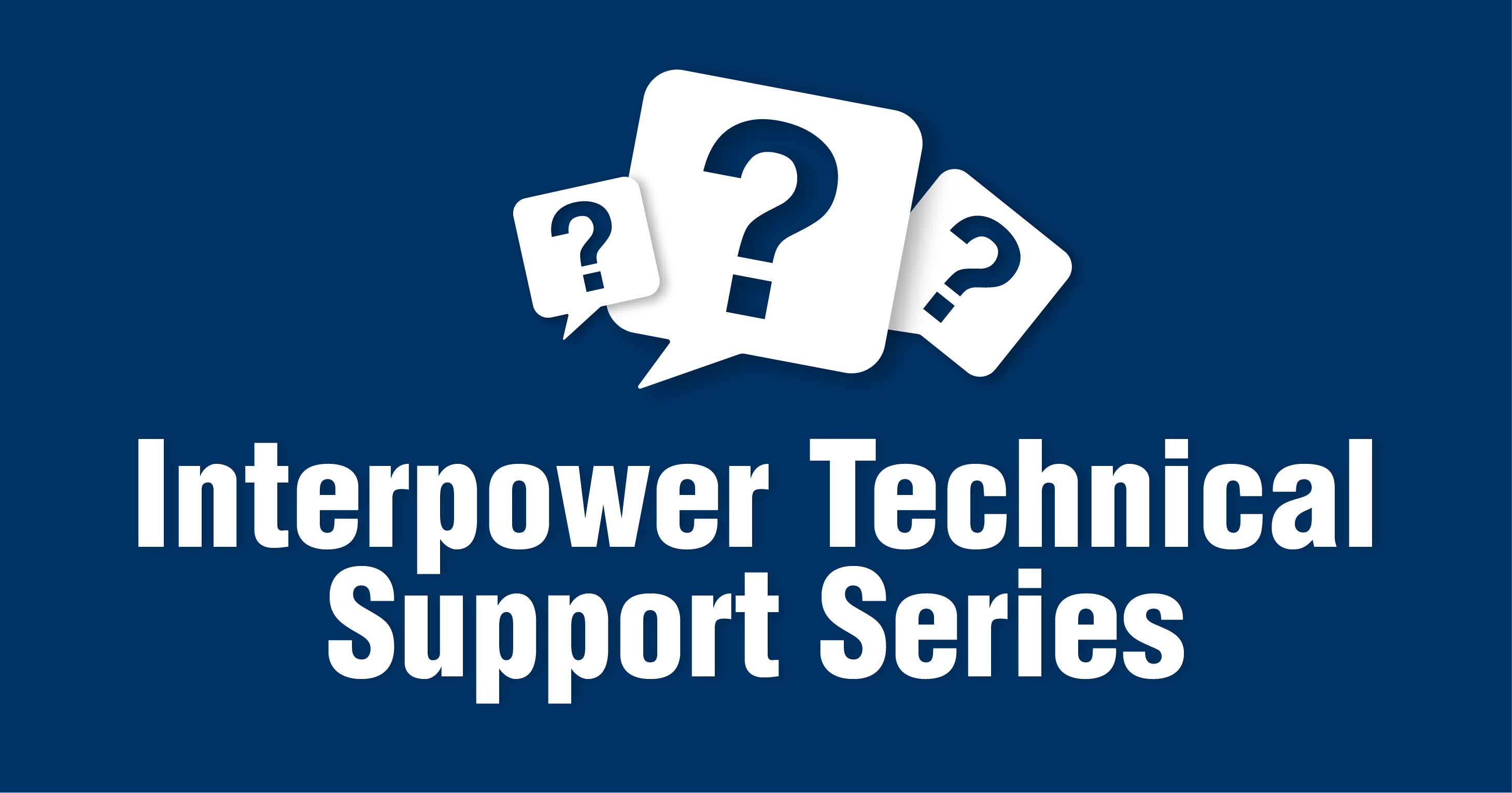Customer Questions answered by Dan Ford, Interpower Technical Support Specialist
Posted on 8/29/22 2:08 PM
 Throughout the year, Interpower will publish its most frequently asked questions from customers.
Throughout the year, Interpower will publish its most frequently asked questions from customers.
Q: Beyond the agency testing conducted by Product Develop Manager Ron Barnett at Interpower’s testing lab in Ames, Iowa, what real-time testing does Interpower conduct at its on-site manufacturing locations in Oskaloosa and Lamoni during the manufacturing process?
Ford: Cords that are manufactured at these Interpower locations are 100% tested. That includes cords and cord sets in Oskaloosa, and cords and cord sets and cable in Lamoni. For cords and cord sets, electrical testing includes hipot, continuity, and pull testing. One Hipot test checks for shorts between the ground and line and the ground and neutral. A second Hipot test checks for shorts between the line and neutral wires. The purpose of the continuity test is to confirm the assembly is wired correctly and there are no breaks in the wire from one end to the other. The pull test ensures that a quality crimp exists. All plugs, connectors, and cable are also visually inspected for surface quality, molding flash and markings.
Note: Next in the series we will delve into specifications of cable manufactured in Lamoni.
Q: What is another common question customers have?
Ford: “Can I get a C14 inlet rated for 20A?” That answer is “No,” since the IEC 60320 standard devices are assigned ratings by the standard and must be adhered to strictly. There are multiple Sheet Styles within the standards that have different ampacity ratings assigned. If an ampacity rating is needed that is higher than the rating you are looking at, you cannot use that device and must choose the appropriate Sheet Style—in this case above, you would choose a C20 inlet (North American use).
Q: Can you use a Continental European plug on North American cable?
Ford: You can’t use a Continental European plug on North American cable because of the different type of cable and the difference in North American and International standards. For example, International H05VV-F cable is measured in millimeters, ranging from 0.75mm² to 2.50mm². As far as larger cable such as 4mm², it’s impossible to mold to. North American cable is measured in American Wire Gauge (AWG). For example, a small gauge North American cable with three conductors would be 3 x 18 AWG (or 18/3 AWG). A large gauge cable would be 3 x 10 AWG (10/3 AWG). Common types of North American cable are SJT, SJTO, SJTOW, SVT, and many others. Below is a comprehensive list of cable types:
North American Cable
There are a variety of North American cable types with letter designations indicating different kinds. The types of North American cable offered by Interpower include:
PVC Cable
- SJT—Junior hard service, thermoplastic-insulated conductors and jacket.
- SJTO—Same as SJT, but oil-resistant thermoplastic outer jacket.
- SJTOW—Same as SJTO except weather-resistant rated.
- SJTW—Hard-usage thermoplastic or rubber-insulated conductors and overall thermoplastic jacket; weather-resistant for outdoor use.
- SVT—Thermoplastic-insulated vacuum cleaner cord, with or without third conductor for grounding purposes.
- SPT-2—Parallel jacketed thermoplastic cable with heavier construction than SPT-1.
- ST—Hard service cord with all thermoplastic construction.
- STO—Same as ST, but with oil-resistant thermoplastic outer jacket.
- STOW—Same as STO, but weather-resistant rated.
Thermoset Cable
- SO—Extra hard service cord, thermoset-insulated conductors and thermoset oil-resistant jacket.
- SOW—Same as SO except weather-resistant rated.
- SOOW—Same as SO except both conductor insulation and jacket are oil-resistant and
weather-resistant rated.
TPE Cable
- SEOW—Extra hard service cord, thermoplastic elastomer conductor insulation and jacket with oil-resistant jacket and weather-resistant rated.
- SJEOW—Hard service cord, thermoplastic elastomer insulation and jacket and weather-resistant rated.
Notes on the Above Cable Designations:
- Definitions of cable designations are derived from UL’s designation scheme as defined in the National Electric Code (NEC)—NFPA-70.
- When only one “O” appears in a classification (e.g. SJEOW), only the outer jacket material is oil-resistant. If two “O’s” are in the classification (e.g. SJEOOW), the insulation covering the conductors and the outer jacket insulation are both oil-resistant.
- CSA does not recognize the letter “E” used by UL to designate thermoplastic elastomer. CSA classifies these cable types using the PVC classification designations with a “TPE” suffix. For example, the designation SJTW (TPE) is used in Canada and SJEW is used in the United States.
See more information on North American cable types.
International Cable
A series of numbers and letters indicate the jacket material, ratings, and size of the cable. The types of international cable offered by Interpower include:
- H03VV-F
- H05V-K
- H05RN-F
- H05VV-F
- H07V-K
- H07RN-F
- S05VC4VF
Topics: product design, international power components, frequently asked questions




